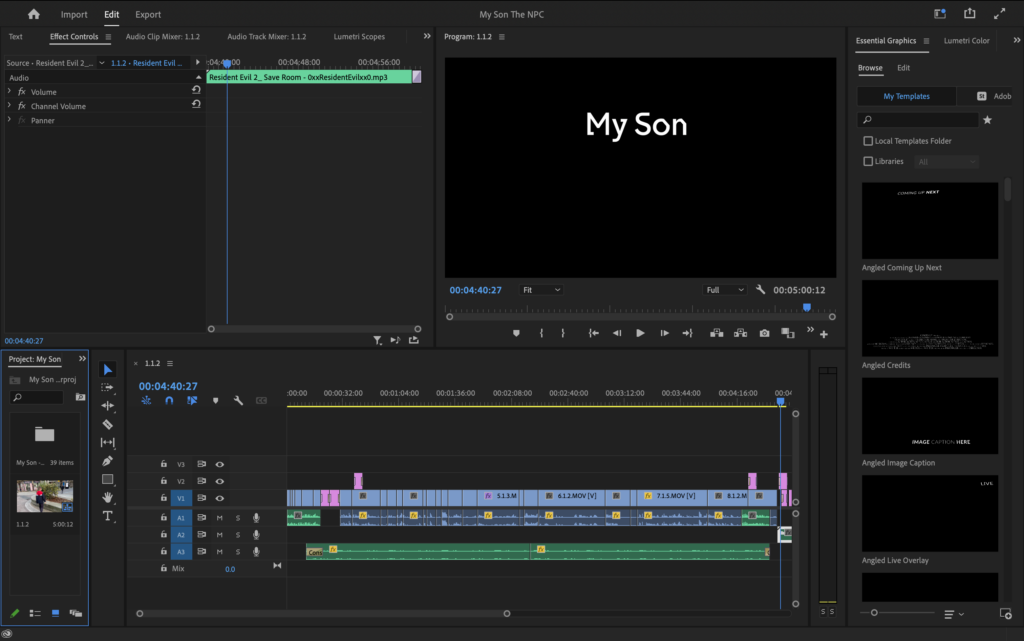I commenced editing the ‘mockumentary’ the day after we finished the shoot. I used adobe premiere pro to edit the film. I have been told by many other videographers and editors that DaVinci is the superior software. I am already very familiar with premiere pro as I have been using it to edit projects for many years. If I were to transfer over to DaVinci, it would be extremely time consuming as I would have to re learn how to edit using that software.
Jamie Lee had creative input when it came to the edit. She wasn’t able to be in the ‘cutting room’ in person due to parenting duties. However, I sent her every draft of the edit I assembled. She emailed notes on what needed cutting out of the film to improve the narrative and pacing. She also sent me the stock footage of Kaleb via cloud services so they could be included in the intro to the mockumentary. Jemma then transferred her narration over as several audio files. She sent over 2 takes of her dialogue for narration, so that I had choice in which version of her narration to use in the edit.

I then had to import graphics from the channel 4 website, to obtain the aesthetic of a Channel 4 ‘dispatches’ documentary. I used these graphics in the final edit including the stock footage of Kaleb within his trance. I then found some serious instrumental tracks, as ‘dispatches’ commonly uses this kind of music. I struggled to understand exactly what Jamie-Lee required in relation to the music tracks. I decided to use the ‘save room’ themes from the video gameResident Evil. She liked both of the tracks I selected, as they were very effective in terms of creating a serious tone for the film (even though the film is fake).
When editing in film, it’s important to assemble several drafts so the director can view which version of the film captures their vision. Pacing must also be taken into consideration since the timing of the narrative can immensely affect the film’s outcome. The one priority the editor makes is gaining an emotional response from the viewer (encoding). The aftermath for the audience watching the film is not what they thought about the camerawork or the performances; it’s how they felt about the film overall (decoding) (Murch, 2001).
On reflection, I should have colour corrected the majority of the footage. This aspect of post-production can fix several colour issues within the image and enhance the picture quality in terms of making it clearer. If the image is dark, colour correction is able to make the picture quality brighter so that it looks similar to the other rushes (footage) in terms of image enhancement. There are limited options in terms of lighting when on set, so colour correction is very key in post-production (Strickland, 2022). When editing my next film, I hope to improve on my colouring techniques and image enhancing in post-production.
Overall, the edit went really well. I worked well with Jamie-Lee when following her ideas for the edit. Her notes were extremely helpful and aiding when cutting needless material from the film. I hope to improve my editing skills for future opportunities in editing and work with directors and producers in post-production.
Bibliography
Murch, W. (2001) “The Rule of Six,” in In the blink of an eye: A perspective on Film editing. 2nd edn. Los Angeles, US: Silman-James Press, pp. 18–18.
Strickland, J. (2022) What is color correction and why is it important?, Videomaker. Available at: https://www.videomaker.com/how-to/editing/color-correction/everything-you-need-to-know-about-color-correction/ (Accessed: 06 May 2024).
